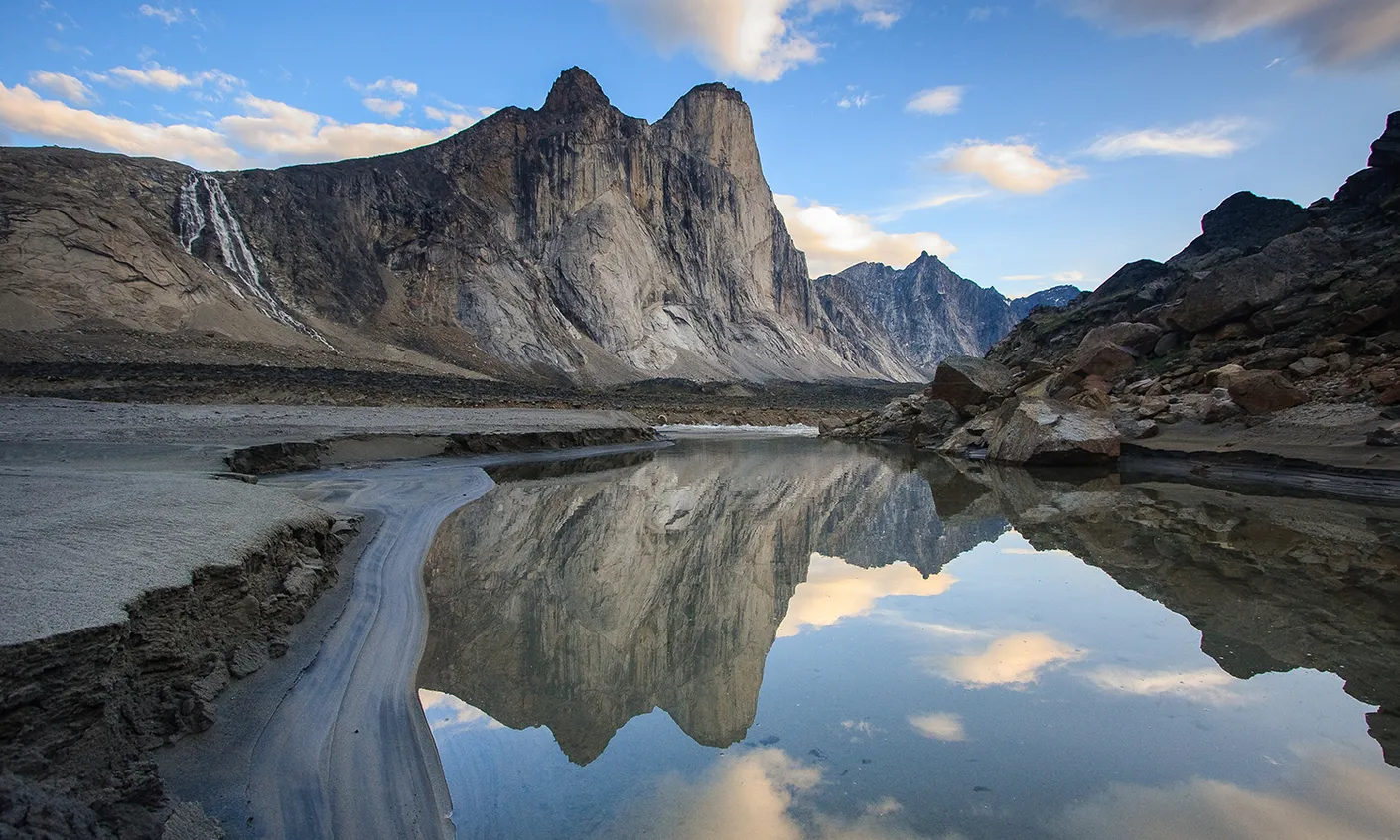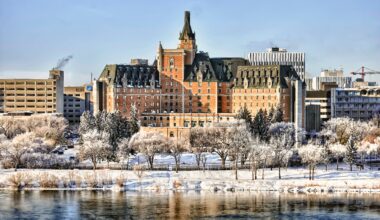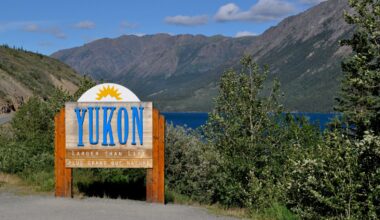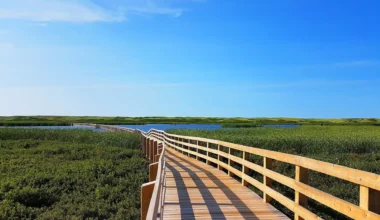Enter Canada’s newest territory, a vast Arctic expanse where ancient Inuit wisdom guides modern governance, where traditional knowledge meets contemporary challenges, and where the midnight sun illuminates possibilities as endless as the tundra horizon.
Nunavut isn’t just another Canadian destination, it’s a living laboratory of Indigenous self-determination, a territory where traditional Inuit values shape government policy, where seasonal rhythms still dictate community life, and where the harsh beauty of the Arctic creates bonds between residents that transcend conventional social boundaries.
From Iqaluit’s role as territorial capital to remote communities scattered across islands and coastlines, from traditional hunting grounds to modern mining developments, Nunavut offers something extraordinary: the opportunity to witness and participate in one of the world’s most successful examples of Indigenous cultural preservation meeting modern territorial governance.
This is Canada’s true Arctic – a place where adaptability isn’t just useful, it’s essential for survival, where respect for traditional knowledge isn’t politically correct, it’s practically necessary, and where every sunrise brings reminders of humanity’s small place in the vast Arctic cosmos.
Ready to explore Canada’s Arctic frontier where ancient wisdom guides modern possibilities? Let’s discover what awaits in this remarkable territory where tradition and innovation dance together under the northern lights.
The Arctic Landscape: Vastness Beyond Imagination
Nunavut encompasses 2.038 million square kilometers – larger than any country except Russia, China, the United States, and Canada itself:
Geographic Immensity
The territory spans incredible distances:
- Stretches from Manitoba border to within 800 kilometers of the North Pole
- Encompasses most of Canada’s Arctic Archipelago
- Includes thousands of islands, many unmapped and unnamed
- Contains vast mainland tundra and Arctic Ocean coastline
- Time zones spanning from Central to Eastern time
This scale creates communities separated by distances that dwarf most countries, yet connected through shared cultural heritage and environmental challenges.
Arctic Island Communities
Many Nunavut communities exist on islands:
Baffin Island
- Largest island in Canada and fifth-largest in the world
- Home to territorial capital Iqaluit and several other communities
- Spectacular mountain ranges and fiord landscapes
- Traditional hunting and fishing territories
- Research stations studying Arctic ecosystems
Victoria Island
- Shared with Northwest Territories
- Traditional Inuit territories with archaeological significance
- Wildlife research and management areas
- Remote communities maintaining traditional lifestyles
- Mineral exploration and potential development
King William Island
- Historical significance from Franklin expedition searches
- Traditional Inuit territorial boundaries
- Archaeological sites revealing ancient Inuit culture
- Wildlife migration routes of international importance
- Scientific research stations
Tundra and Permafrost
Nunavut’s landscape is dominated by Arctic conditions:
- Permafrost underlying most territorial land
- Tundra vegetation adapted to extreme conditions
- Seasonal wetlands supporting migratory wildlife
- River systems flowing to Arctic Ocean
- Coastal areas with sea ice most of the year
These conditions create unique challenges and opportunities for residents and researchers.
Marine Environment
Arctic Ocean waters define much of Nunavut:
- Sea ice providing traditional hunting platforms
- Marine mammals essential to traditional economies
- Shipping routes opening due to climate change
- Research opportunities in changing Arctic ecosystems
- Traditional knowledge guiding marine resource management
This marine environment remains central to Inuit culture and territorial economy.
Iqaluit: Arctic Capital
As Nunavut’s capital and largest community (8,000+ residents), Iqaluit represents modern Arctic governance:
Government Center
Iqaluit serves as the territorial political hub:
Territorial Government
- Legislative Assembly building housing territorial parliament
- Government departments serving all of Nunavut
- Indigenous-led governance incorporating traditional values
- Consensus government system based on Inuit decision-making traditions
- Employment opportunities in administration and policy development
Federal Presence
- Government of Canada offices serving the Arctic
- Research coordination and scientific administration
- Indigenous and northern affairs administration
- Environmental monitoring and conservation programs
- Military and sovereignty operations coordination
Modern Arctic City
Despite its remote location, Iqaluit offers sophisticated services:
- Nunavut Arctic College providing post-secondary education
- Qikiqtani General Hospital serving much of the eastern Arctic
- Cultural facilities including museums and performance venues
- Shopping and services meeting most daily needs
- Professional services including legal, financial, and consulting
Cultural Integration
Iqaluit exemplifies successful cultural integration:
- Inuktitut widely spoken alongside English and French
- Traditional Inuit cultural practices maintained alongside modern governance
- Arts community producing internationally recognized work
- Traditional knowledge integrated into government decision-making
- Cultural festivals and celebrations throughout the year
This integration creates one of the world’s most unique capital cities.
Cultural Foundation: Inuit Values in Modern Governance
Nunavut’s greatest achievement is successfully integrating traditional Inuit culture with modern territorial governance:
Traditional Knowledge Systems
Inuit Qaujimajatuqangit (traditional knowledge) guides territorial policies:
- Environmental management based on traditional ecological knowledge
- Education systems incorporating Inuit language and cultural practices
- Healthcare approaches integrating traditional healing with modern medicine
- Economic development respecting traditional values and practices
- Justice system incorporating traditional conflict resolution methods
Language Preservation
Inuktitut remains a living language:
- Official territorial language alongside English and French
- Education available in Inuktitut from early childhood through high school
- Government services delivered in Inuktitut
- Media and communications in Inuktitut
- Literature and arts creation in traditional language
This language preservation ensures cultural continuity while enabling modern governance.
Traditional Governance Values
Consensus government reflects traditional Inuit decision-making:
- No political parties, decisions made through consensus
- Extended discussion ensuring all voices are heard
- Traditional leadership values incorporated into modern roles
- Elder consultation in government decision-making
- Community input integral to policy development
Arts and Cultural Expression
Inuit artists gain international recognition:
- Stone carving and printmaking traditions continuing
- Contemporary art expressions using traditional themes and techniques
- Literary works in Inuktitut and English
- Traditional music and dance preservation and evolution
- Cultural tourism showcasing authentic Inuit experiences
This cultural strength creates economic opportunities while preserving heritage.
Economic Opportunities: Arctic Innovation
Nunavut’s economy balances traditional activities with modern opportunities:
Government Employment
The territorial government provides significant employment:
- Administrative roles requiring bilingual capabilities
- Professional positions in healthcare, education, and social services
- Policy development incorporating traditional knowledge
- Community liaison and cultural preservation roles
- Research coordination and traditional knowledge documentation
Mining and Resource Development
Nunavut contains significant mineral wealth:
- Gold, diamond, and base metal deposits throughout the territory
- Iron ore deposits on Baffin Island
- Impact and benefit agreements ensuring community participation
- Employment opportunities for local residents
- Revenue sharing supporting community development
Tourism Industry
Arctic tourism creates growing opportunities:
- Cultural tourism highlighting authentic Inuit experiences
- Adventure tourism leveraging Arctic landscapes and wildlife
- Research tourism supporting scientific activities
- Cruise ship tourism increasing with sea ice reduction
- Photography and wildlife viewing expeditions
Traditional Economy
Traditional activities remain economically important:
- Subsistence hunting and fishing reducing living costs
- Traditional crafts and arts production for sale
- Traditional knowledge services for research and development
- Cultural education and interpretation services
- Traditional food harvesting and sharing networks
Emerging Sectors
New economic opportunities are developing:
- Arctic research support services
- Traditional knowledge consulting
- Arctic technology testing and development
- Renewable energy development adapted to Arctic conditions
- Cultural education and language services
These diverse economic activities create opportunities while respecting traditional values.
Community Life: Arctic Adaptation

Life in Nunavut requires profound adaptation to Arctic conditions:
Seasonal Rhythms
Arctic communities follow extreme seasonal patterns:
Winter Dominance (October-May)
- Temperatures averaging -25°C to -35°C (-13°F to -31°F)
- Extended darkness with minimal daylight
- Traditional hunting seasons for Arctic animals
- Community social activities and indoor pursuits
- Traditional storytelling and cultural transmission seasons
Summer Intensity (June-September)
- Temperatures ranging from 5-20°C (41-68°F)
- Midnight sun providing continuous daylight
- Construction and maintenance work concentrated
- Traditional fishing and gathering activities
- Community festivals and cultural celebrations
Community Cooperation
Arctic conditions require mutual support:
- Neighbors helping neighbors during emergencies
- Community cooperation essential for survival
- Sharing traditional foods and resources
- Collective problem-solving for community challenges
- Integration of newcomers requiring community support
Traditional Skills
Arctic living requires traditional knowledge:
- Survival skills for extreme weather conditions
- Traditional hunting and fishing techniques
- Traditional food preparation and preservation
- Arctic clothing and equipment knowledge
- Traditional navigation and safety practices
Modern Adaptations
Contemporary Arctic living incorporates modern technology:
- Satellite communications connecting remote communities
- Modern heating and housing technologies
- Snowmobiles and all-terrain vehicles for transportation
- Modern hunting and fishing equipment
- Internet and telecommunications for education and business
This blend of traditional and modern creates unique Arctic lifestyles.
Remote Communities: Authentic Arctic Life
Beyond Iqaluit, remote communities offer authentic Arctic experiences:
Community Profiles
Pond Inlet
- Northern Baffin Island community with spectacular scenery
- Traditional hunting culture maintained alongside modern amenities
- Tourism opportunities including floe edge experiences
- Research station supporting Arctic studies
- Traditional knowledge preservation programs
Igloolik
- Traditional Inuit cultural center
- Research station studying traditional knowledge and climate change
- Arts community producing internationally recognized work
- Traditional hunting and fishing economy
- Cultural festivals and celebrations
Rankin Inlet
- Regional center serving western Nunavut
- Mining history and continuing mineral exploration
- Government services and healthcare facility
- Transportation hub for surrounding communities
- Modern amenities in Arctic setting
Cambridge Bay
- Northwest Passage community with increasing strategic importance
- Research station studying Arctic Ocean changes
- Traditional and modern hunting economies
- Cultural preservation programs
- Tourism opportunities related to Arctic exploration history
Remote Community Advantages
- Strong cultural identity and traditional knowledge preservation
- Direct connection to Arctic wildlife and ecosystems
- Traditional economy supplementing cash economy
- Close community relationships and mutual support
- Authentic Arctic experiences unavailable elsewhere
Remote Community Challenges
- Extremely high cost of living due to transportation costs
- Limited employment opportunities outside government and traditional activities
- Access to specialized healthcare and professional services
- Educational opportunities beyond high school requiring travel
- Social isolation for individuals not adapted to small community life
Understanding these realities is essential for anyone considering remote Arctic community living.
Immigration Considerations: Arctic Adaptation
Immigration to Nunavut requires special considerations:
No Provincial Nominee Program
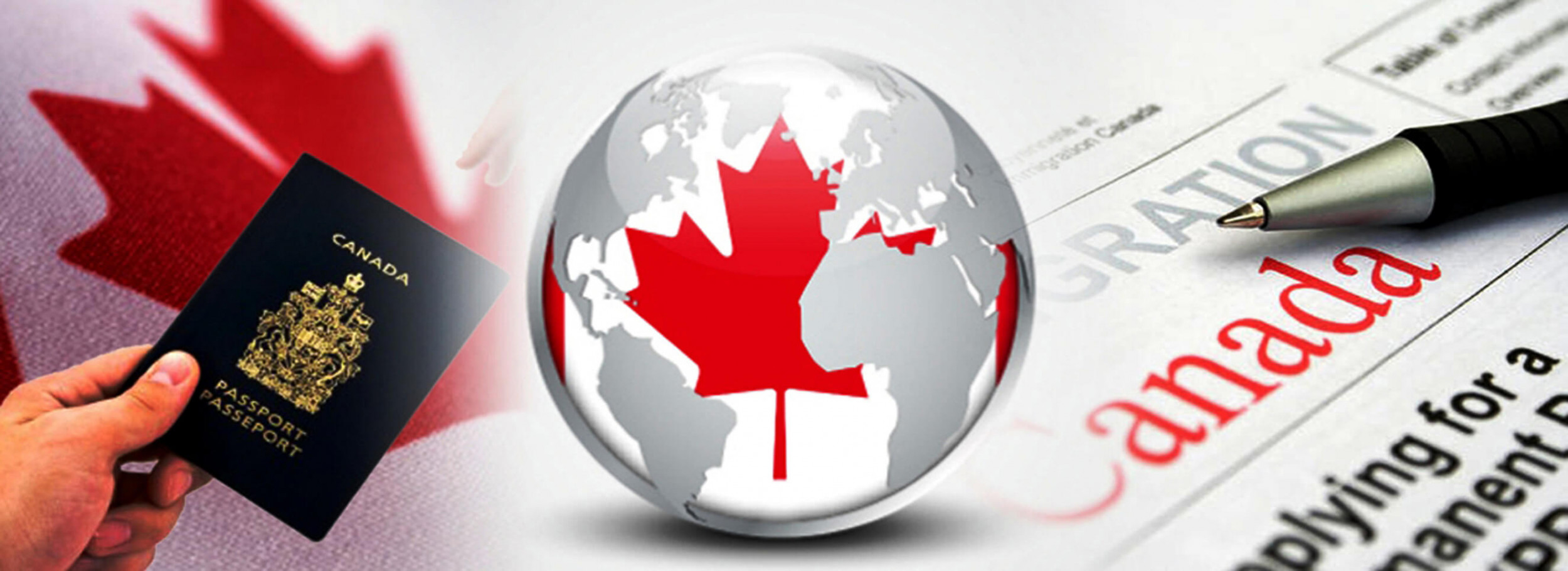
Unlike provinces and other territories, Nunavut does not operate a nominee program:
- Immigration through federal programs only
- Job offers from Nunavut employers qualifying for various federal programs
- Temporary foreign worker programs for specific labor needs
- International student pathways through Nunavut Arctic College
- Family reunification for those already in territory
Unique Immigration Challenges
Arctic living creates specific immigration considerations:
- Cultural adaptation to Inuit-majority communities
- Language learning including Inuktitut for community integration
- Extreme climate adaptation requirements
- High cost of living requiring financial preparation
- Limited employment opportunities in specialized fields
Employment Opportunities for Newcomers
Certain professions offer immigration pathways:
- Healthcare professionals addressing chronic shortages
- Teachers and education professionals, particularly with Inuktitut skills
- Government administrators and policy professionals
- Skilled trades workers for construction and maintenance
- Research scientists and technical specialists
Cultural Integration Requirements
Successful integration requires:
- Respect for Inuit culture and traditional knowledge
- Learning about consensus government and community decision-making
- Understanding traditional economic activities and their importance
- Adapting to community-centered lifestyle
- Contributing to community while learning from traditional knowledge
Support Services
Limited settlement services address Arctic-specific needs:
- Cultural orientation to Inuit protocols and Arctic lifestyle
- Employment connection services
- Language learning support
- Community integration programs
- Traditional knowledge learning opportunities
Education and Research: Arctic Knowledge
Nunavut supports education and research adapted to Arctic realities:
Nunavut Arctic College
The territorial college serves Arctic educational needs:
- Programs delivered in communities throughout territory
- Traditional knowledge integration in curricula
- Adult education and literacy programs
- Trades training adapted to Arctic conditions
- University partnerships providing degree programs
Research Excellence
The territory hosts significant Arctic research:
- Climate change research in rapidly changing Arctic environments
- Traditional knowledge documentation and preservation
- Arctic ecosystem and wildlife studies
- Social and cultural research in Inuit communities
- Arctic technology and adaptation research
Cultural Education
Educational initiatives preserve and transmit Inuit knowledge:
- Inuktitut language preservation and revitalization
- Traditional skills education and mentorship
- Cultural arts instruction and support
- Traditional knowledge integration in formal education
- Elder involvement in educational programming
International Collaboration
Nunavut participates in circumpolar research and education:
- Arctic Council research initiatives
- International polar research coordination
- Traditional knowledge sharing with other Indigenous Arctic peoples
- Climate change adaptation research collaboration
- Arctic sovereignty and governance studies
This educational and research foundation supports both traditional knowledge preservation and modern territorial development.
Recreation and Lifestyle: Arctic Adventures
Nunavut offers recreational opportunities impossible anywhere else:
Traditional Activities
- Traditional hunting for Arctic animals
- Traditional fishing through ice and open water
- Traditional travel methods including dog sledding
- Traditional games and sports competitions
- Traditional cultural celebrations and festivals
Modern Arctic Recreation
- Wildlife viewing including polar bears, whales, and Arctic birds
- Aurora viewing from September through March
- Photography of Arctic landscapes and wildlife
- Arctic Ocean activities including boat tours and kayaking
- Community sports and recreation programs
Cultural Experiences
- Traditional Inuit cultural immersion
- Traditional craft learning and creation
- Traditional food preparation and consumption
- Traditional storytelling and knowledge sharing
- Traditional music and dance participation
Adventure Tourism
- Arctic expedition experiences
- Extreme cold weather challenges
- Midnight sun hiking and camping
- Sea ice and iceberg exploration
- Historical site exploration
These recreational opportunities create lifestyles centered on authentic Arctic and traditional experiences.
Climate Reality: Extreme Arctic Conditions
Nunavut’s climate represents some of Earth’s most challenging conditions:
Extreme Cold
- Winter temperatures averaging -30°C to -40°C (-22°F to -40°F)
- Extreme cold events reaching -50°C (-58°F) or lower
- Severe wind chill creating dangerous conditions
- Extended winter season from October through May
- Infrastructure challenges due to permafrost and extreme cold
Extended Darkness and Light
- Winter darkness lasting months in northern communities
- Summer midnight sun lasting months
- Seasonal affective disorder requiring management
- Traditional adaptation methods for extreme light cycles
- Modern lighting and vitamin D supplementation
Arctic Weather Patterns
- Sudden severe storms with little warning
- Ground blizzards reducing visibility to zero
- Arctic sea ice affecting weather and transportation
- Unpredictable weather requiring constant adaptation
- Traditional weather prediction knowledge remaining valuable
Adaptation Requirements
Successful Arctic living requires:
- Proper housing design and heating systems
- Appropriate clothing and survival equipment
- Emergency preparedness and self-sufficiency
- Mental health support for seasonal challenges
- Community connections for mutual support
Cost of Living: Arctic Economics
Nunavut has Canada’s highest cost of living:
Extreme Costs
- Food costs often double or triple southern prices
- Gasoline and heating fuel extremely expensive
- Consumer goods costs prohibitive due to transportation
- Housing costs high due to construction challenges and limited supply
Offsetting Factors
- Government employment often includes northern allowances
- Traditional economy reducing dependence on cash purchases
- Strong social networks sharing resources and support
- Unique lifestyle experiences unavailable elsewhere
- Government programs supporting Arctic living costs
Economic Support
- Territorial government programs addressing high living costs
- Federal northern allowances for eligible residents
- Subsidized essential services and transportation
- Traditional economy integration reducing cash requirements
- Community cooperation reducing individual costs
Understanding these extreme economic realities is essential for anyone considering Arctic living.
Conclusion: Embracing Arctic Authenticity
Nunavut represents Canada’s most extreme and authentic cultural experience – the opportunity to witness and participate in successful Indigenous governance, to live in landscapes that humble and inspire daily, and to be part of communities where ancient wisdom guides modern challenges.
You’ll Likely Thrive in Nunavut If You:
- Deeply respect Indigenous cultures and traditional knowledge
- Can adapt to extreme Arctic climate and seasonal variations
- Value authentic cultural experiences over conventional comforts
- Seek meaningful work contributing to Indigenous community development
- Appreciate small community life and mutual interdependence
You Might Face Challenges If:
- You require extensive urban amenities and services
- You struggle with extreme seasonal light variations or isolation
- You cannot adapt to extremely high living costs
- You need extensive professional networks and conventional career advancement
- You work in specialized fields with limited Arctic applications
Nunavut offers something unique in the modern world, the chance to experience successful Indigenous self-governance, to live in harmony with one of Earth’s most challenging environments, and to be part of communities where individual contributions genuinely matter for collective survival and prosperity.
The question isn’t whether Nunavut has opportunities, it’s whether you’re ready for the profound life changes that come with embracing authentic Arctic living in an Indigenous-led territory.
Helpful Resources for Learning More About Nunavut:
